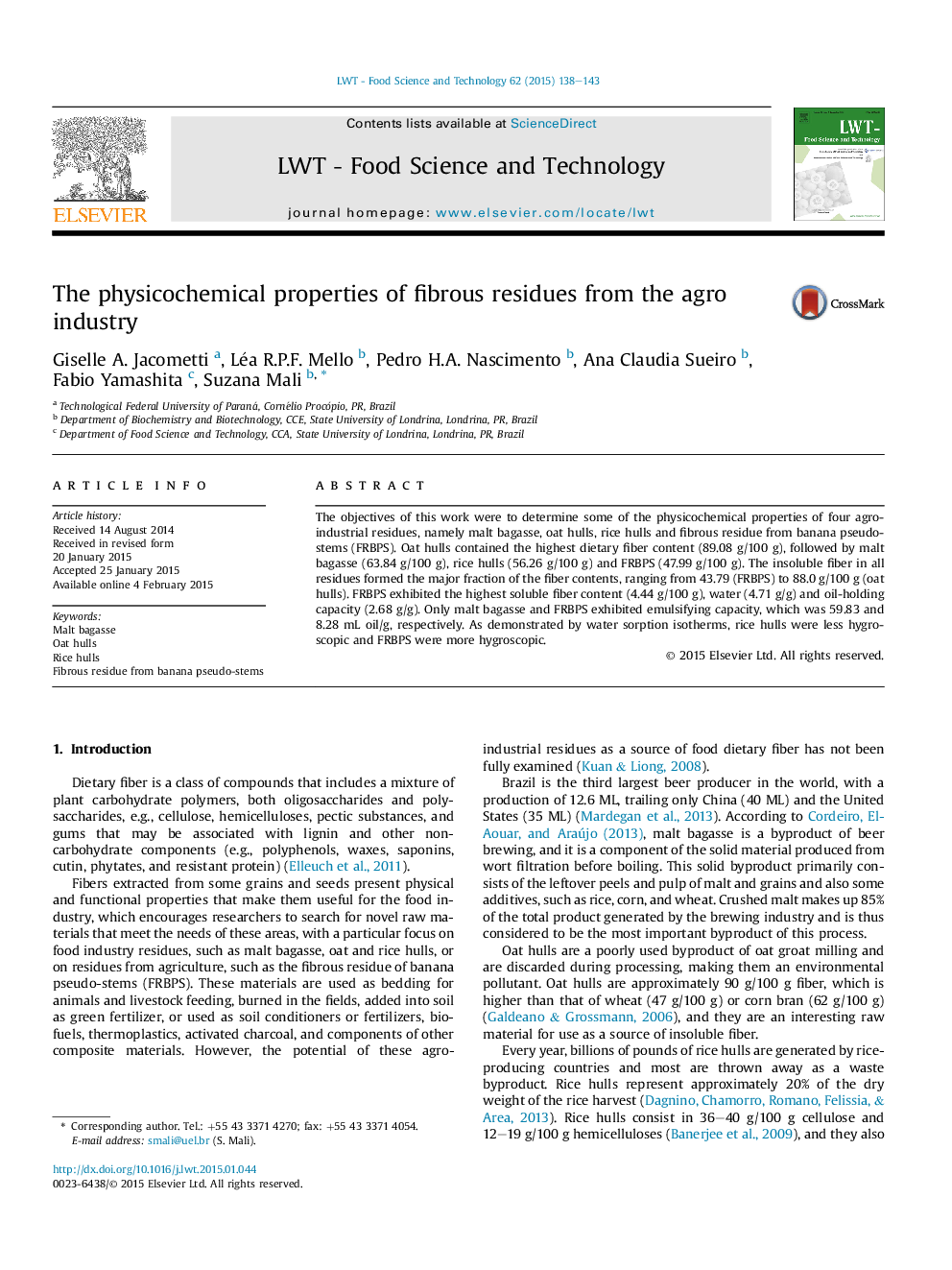| Article ID | Journal | Published Year | Pages | File Type |
|---|---|---|---|---|
| 6401275 | LWT - Food Science and Technology | 2015 | 6 Pages |
â¢The physicochemical properties of four agro-industrial residues were determined.â¢Malt bagasse, oat hulls, rice hulls, fibrous residue from banana pseudo-stems.â¢In all the residues, insoluble fibers formed the major fraction of the fiber content.â¢Banana residue with highest soluble fiber content, water and oil-holding capacities.â¢The residues had potential for use as a dietary fiber source in health food products.
The objectives of this work were to determine some of the physicochemical properties of four agro-industrial residues, namely malt bagasse, oat hulls, rice hulls and fibrous residue from banana pseudo-stems (FRBPS). Oat hulls contained the highest dietary fiber content (89.08Â g/100Â g), followed by malt bagasse (63.84Â g/100Â g), rice hulls (56.26Â g/100Â g) and FRBPS (47.99Â g/100Â g). The insoluble fiber in all residues formed the major fraction of the fiber contents, ranging from 43.79 (FRBPS) to 88.0Â g/100Â g (oat hulls). FRBPS exhibited the highest soluble fiber content (4.44Â g/100Â g), water (4.71Â g/g) and oil-holding capacity (2.68Â g/g). Only malt bagasse and FRBPS exhibited emulsifying capacity, which was 59.83 and 8.28Â mL oil/g, respectively. As demonstrated by water sorption isotherms, rice hulls were less hygroscopic and FRBPS were more hygroscopic.
